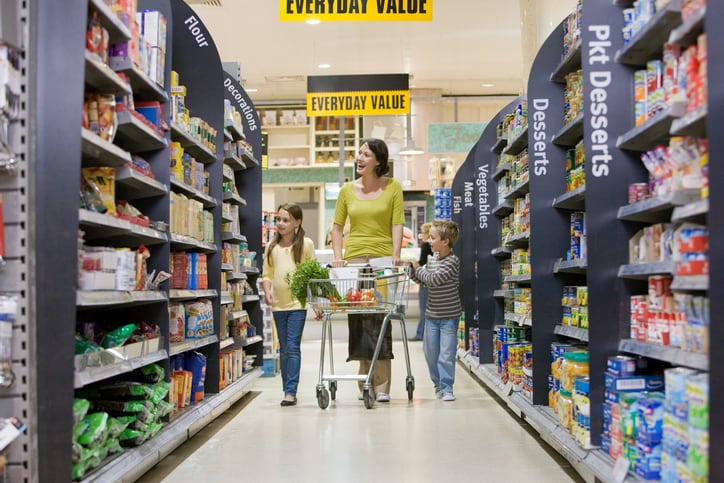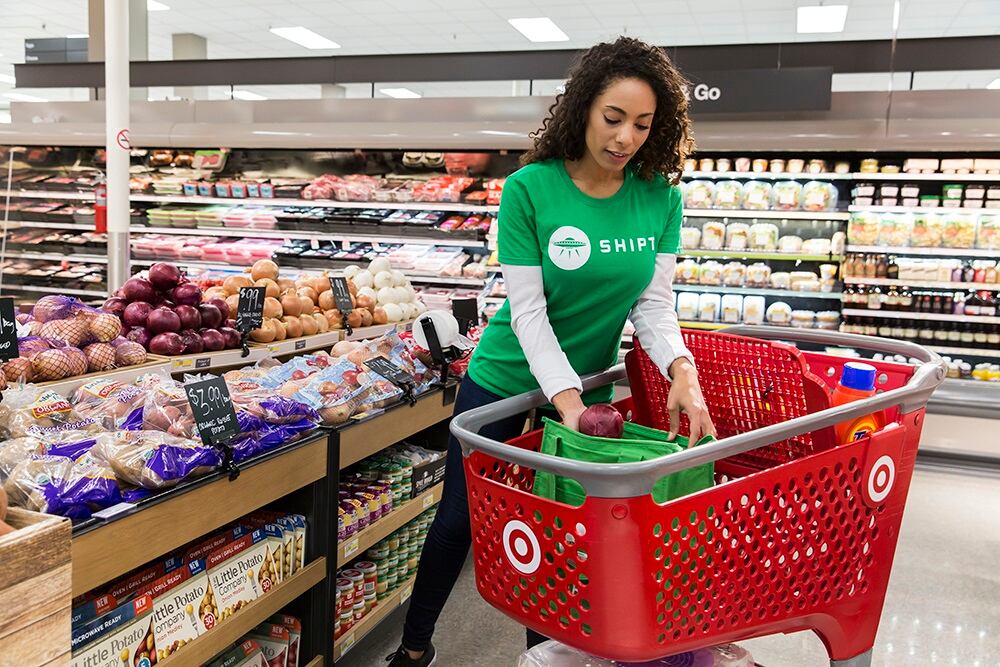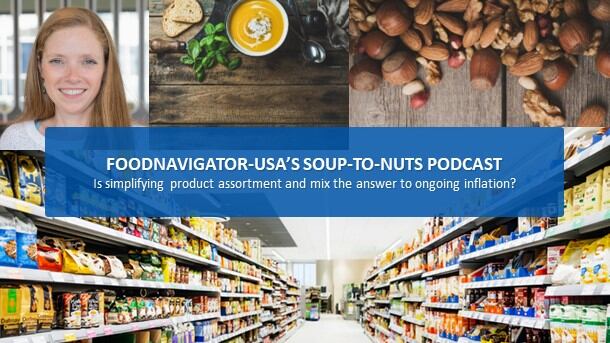With inflation driving up the price of all foods and beverages a staggering 28.8% in October 2022 vs October 2019, 80% of consumers reported shopping for groceries differently, according to the data published earlier this month.
While the most popular money-saving measures include looking for sales and deals more often, a strategy employed by 55% of consumers, cutting back on non-essentials (45%), looking for coupons (35%) and buying store brand items (31%), consumers are also changing where they shop for food to save money.
According to the IRI data, 15% of consumers report visiting lower-cost retailers, while 18% report visiting multiple stores for “the best deals” – a strategy that drove up the number of store trips 2% in October over the same time last year.
As a result, mass and supercenters saw their share of food and beverage dollars climb to 22.1%, while the club channel reached a high of 12.1% in October. These gains came at the cost of market share for traditional and health grocery stores, which both saw share drop to their lowest levels since the pandemic began at 36% and 2%, respectively, according to IRI’s Integrated Fresh Household Panel.
Shoppers pull back on volume in face of price hikes
While consumers have fared better-than-expected over the past year thanks in part to stimulus money doled out by the government early in the pandemic, which allowed some shoppers to build their savings and absorb higher prices without cutting back on the amount of products in their carts, inflation is starting to take a more significant toll.
In October, total food and beverage units purchased fell 4% over the prior year and were down 5.5% on a two-year stack, according to 210 Analytics. The amount of perishable food dropped slightly more than that of the center store at 5.8% compared to 5% in October over the previous year. Still, both are in line with the average 4% to 5% drop in units over the past several months.
While consumers are purchasing fewer items across categories, some segments were hit harder than others with frozen falling the most.
According to IRI data, consumers bought 5.1% fewer units of frozen food in October over the same time last year, followed by a 4.6% reduction in pounds of fresh vegetables. Fresh fruit fared slightly better, dropping 3.9% pounds, as did fresh meat, which fell 2.4% in October over a year ago.
The dip in each category was not uniform – reflecting shoppers' efforts to buy more with less.
For example, in fresh meat, IRI tracked a more significant drop in ground veal with a 7.9% decrease in pounds sold in October compared to 2021. The amount of ground turkey sold also fell 6.1% year-over-year, while the among of ground chicken, pork, lamb and beef all rose.
Retailers tighten product assortment
Retailers are responding to shifts in shopper demand by adjusting their product mix – and often reducing the number of SKUs available, according to IRI data.
Within meat, for example, the number of items per store dropped 1.9% to 485 items compared to 2021 and 6.2% compared to pre-pandemic. Most of this decline came from processed meat, which saw the number of items drop 8.9% to 305 in October compared to pre-pandemic. But the assortment of fresh meat also fell 2.6% on average per store year-over-year, IRI reports.
A similar story played out in the frozen department where the average number of items stocked in October fell 1.1% from a year ago and 4.9% from pre-pandemic.
The drop was led by frozen baked goods (down 8.6%), meals (down 7.4%) and meat and poultry (down 5.7%). The assortment was up, however, within frozen beverages (17.8%), snacks (5.7%), seafood (0.6%) and processed meat and poultry (up 0.7%), according to IRI.




